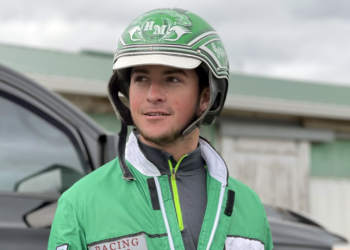Harness Racing Victoria CEO Matt Isaacs has outlined details of the industry’s revenue and cost challenges, and how the Melton land transfer will help the sport transition to a sustainable pathway.
The details were shared during a Harness Racing Advisory Council meeting on August 5, which council members and associated stakeholders attended along with HRV’s Board and executive.
At the meeting, HRV representatives outlined harness racing in Victoria’s:
- Revenue and cost challenges
- Past reliance on government grants, which ceased in FY23
- A detailed understanding of HRV’s costs, including returns to participants, which equate for 66% of revenue (other Australian racing jurisdictions are typically below 55%)
- Use of the Melton land to cut long-held debt and soften the transition to sustainability
- Significant commercial risks regarding wagering, vision and racing industry partners
- A transformational roadmap to financial sustainability
“As has been discussed readily with stakeholders and announced previously, harness racing in Victoria faces financial challenges, but we must continue to reshape the sport to ensure it has a future in Victoria,” Isaacs said.
Central to the industry’s challenge is that HRV revenue has not kept pace with prizemoney and operational costs.
“We simply spend more money to put on the show than we earn, and this has been the case since 2017. As we have made clear for the past 12 months, cost-related changes are required to rectify that.”
Revenue, costs and debt
HRV revenue, excluding government funding, has been stagnant for a decade, down 1 per cent from FY14 ($69.2m) to FY23 ($68.5m), with the sport challenged for relevance in a competitive and transforming wagering market.
That has seen revenue not keep up with prizemoney, and racing, integrity, infrastructure and administration costs.
HRV has also carried long-held debt from purchasing and constructing Melton’s racecourse, which opened in 2009.
That debt increased to $41.9 million after losses in FY22 ($4m) and FY23 ($6.8m), when there was investment to grow the sport’s base and capital expenditure on projects such as LED lights and The Club Lounge owners’ room at Melton.
In the 12 months to January 31, 2024, servicing that $41.9m debt cost HRV almost $2m as interest rates increased.
Melton land
HRV has long prepared the surplus land at Melton for sale for the betterment of the sport, spending more than $1m in preparation works.
However, owing to state policy changes in 2019 to the Victorian Government Land Transactions Policy and Victorian Government Landholding Policy and Guidelines, HRV, as a statutory government authority, was no longer authorised to sell the land, with all transactions required to be undertaken by the Department of Finance’s land and property division.
Furthermore, the policy changes required proceeds from all land sales to be returned to the state’s consolidated fund (retained by Treasury), not the statutory government authority (HRV).
Against the land’s future transfer, the Government agreed to clear HRV’s $41.9m debt and provide the balance in solvency funding to help harness racing in Victoria transition to a self-sustainable model.
That solvency funding equated to $8m in FY23, a further $23m in FY24, and $13m across FY25 and FY26.
“The surplus Melton land was set aside to help the sport in a rainy day, and it’s raining, with harness racing battling for relevancy in a crowded and declining wagering market, and without the crutch of grants from previous years,” Isaacs said.
The pathway to sustainability
“Harness racing in Victoria is debt-free and with some solvency funding for the next two financial years. The sport now needs to transition to standing on its own two feet.
“Since I started in February 2023, with the support of the Government and Board, we have made significant in-roads to reduce costs and do so in a responsible manner that enables us to still meet our requirements under the Racing Act.”
That includes announcements in August 2023, May 2024 and July 2024, which equated to more than $12 million in operational and $4.5 million in prizemoney savings.
“Without intervention, a larger loss was forecast in FY24, but that has significantly reduced despite a $2m allocation to LED lighting for country clubs,” Isaacs said.
“Further changes will need to be made to bridge the gap between revenue and cost, but the compensation for the Melton land has meant we haven’t had to make seismic cuts to prizemoney, clubs and racing.
“We will look to continue to innovate to increase revenue, like the recent changes to the racing calendar, but we also have only limited levers we can pull.
“We look forward to continuing to work with the industry to help design the future. This isn’t a crisis, this is a generational challenge for harness racing as we continue to fight for relevance in a competitive racing and sports market.
“Like we encouraged senior stakeholders on August 5 at the Harness Racing Advisory Council meeting, we want the industry to rally together with an open mind and proactive, positive ideas that help strengthen the future of this great sport in Victoria.”
LISTEN: HRV Chair Adam Kilgour and CEO Matt Isaacs on SENTrack’s Giddy Up
LISTEN: HRV Chair Adam Kilgour and CEO Matt Isaacs on RSN’s Racing Pulse
by Michael Howard, for Harness Racing Victoria

 USA
USA Canada
Canada Australia
Australia New Zealand
New Zealand Europe
Europe UK / IRE
UK / IRE



